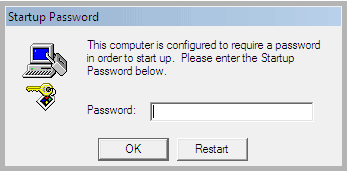PNW Computers' Favorite FREE Mac Apps
VLC is a free and open source cross-platform multimedia player and framework that plays most multimedia files as well as DVDs, Audio CDs, VCDs, and various streaming protocols.
Titanium Software ~
OnyX
OnyX is a multifunction utility for OS X which you can use to verify the start up disk and the structure of its system files, to run miscellaneous tasks of cleaning and system maintenance, to configure some hidden parameters of many of Apple’s applications, and more.
Titanium Software ~
Maintenance
Maintenance is a system maintenance and cleaning utility for OS X which you can use to run miscellaneous tasks of system maintenance: repair permissions, run periodic scripts, rebuild the databases, delete Application, Font and System cache, and more.
Derlien Software ~
Disk Inventory X
Disk Inventory X is a disk usage utility for Mac OS X 10.3 (and later). It shows the sizes of files and folders in a special graphical way called "
treemaps".
If you've ever wondered where all your disk space has gone, Disk Inventory X will help you to answer this question.
smcFanControl
smcFanControl is MUST HAVE for keeping your Mac running cool. smcFanControl lets the user set the minimum speed of the built in fans; so you can increase your minimum fan speed to make your Intel Mac run cooler. However in order not to damage your machines smcFanControl doesn't let you set a minimum speed to a value below Apple's defaults.
ClamXav
ClamXav is a free malware scanner for Mac OS X. It uses the very popular ClamAV open source antivirus engine as a back end and has the ability to detect both Windows and Mac threats.
ClamXav can be setup up as passive or active: scan only the files you tell it to or your entire hard drive, whichever you prefer; you can also choose to activate Sentry to monitor your hard drive and scan new files as they arrive.
CCleaner is the number-one tool for cleaning your Mac. It protects your privacy online and makes your computer faster and more secure. Easy to use and a small fast download.
FreeMacSoft ~
AppCleaner
AppCleaner is a small application which allows you to thoroughly uninstall unwanted apps.
Installing an application distributes many files throughout your System using space of your Hard Drive unnecessarily.
AppCleaner finds all these small files and safely deletes them.
Simply drop an application onto the AppCleaner window. It will find for the related files and you can delete them by clicking the delete button.
With coconutBattery you are always aware of your current battery health. It shows you live information about the battery in your Mac and iOS device (iPhone, iPad, iPod touch) including:
- Age of your Mac, iOS device and battery
- How often the battery was charged
- Your battery health (capacity in relation to the original capacity your battery had when it left the factory) and much more...
gfxCardStatus
gfxCardStatus is an unobtrusive menu bar app for OS X that allows MacBook Pro users to see which apps are affecting their battery life by using the more power-hungry graphics.
The Unarchiver is a much more capable replacement for "Archive Utility.app", the built-in archive unpacker program on Mac OS X. The Unarchiver is designed to handle many more formats than Archive Utility, and to better fit in with the design of the Finder. It can also handle file names in foreign character sets, created with non-English versions of other operating systems. I personally find it useful for opening Japanese archives, but it should handle many other languages just as well.
Monolingual is a program for removing unnecessary language resources from OS X, in order to reclaim several hundred megabytes of disk space. It requires a 64-bit capable Intel-based Mac and at least OS X 10.10 (Yosemite).
NoobProof is a very easy tool. When you start it the first time you have a service list and you can choose to "allow" or "deny" connections to those services. So you have only to decide which service to allow, and then check "Activate NoobProof". You can also add selective "allow" and "deny", and you can delete or add new custom services in service list.
WaterRoof is a very complex and powerful tool, which allows you to configure almost every aspect and option of "ipfw". And more, you can list/manage active connections or network files, do graphics log analysis, configure your mac as a router with bandwidth management with tasteful rules and tons of other options. You need a good knowledge of "what a firewall is", and you should also have at least a basic ipfw knowledge.
TeamViewer is the All-In-One Software for Remote Support and Online Meetings.
Remote control any computer or Mac over the Internet within seconds or use TeamViewer for online meetings.
If you have any questions or comments please don't hesitate to get in touch!
Jon Pienkowski
Pacific NorthWest Computers
www.pnwcomputers.com
360-624-7379


















